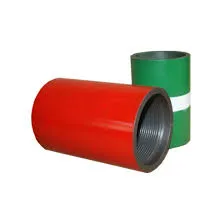- Afrikaans
- Albanian
- Amharic
- Arabic
- Armenian
- Azerbaijani
- Basque
- Belarusian
- Bengali
- Bosnian
- Bulgarian
- Catalan
- Cebuano
- Corsican
- Croatian
- Czech
- Danish
- Dutch
- English
- Esperanto
- Estonian
- Finnish
- French
- Frisian
- Galician
- Georgian
- German
- Greek
- Gujarati
- Haitian Creole
- hausa
- hawaiian
- Hebrew
- Hindi
- Miao
- Hungarian
- Icelandic
- igbo
- Indonesian
- irish
- Italian
- Japanese
- Javanese
- Kannada
- kazakh
- Khmer
- Rwandese
- Korean
- Kurdish
- Kyrgyz
- Lao
- Latin
- Latvian
- Lithuanian
- Luxembourgish
- Macedonian
- Malgashi
- Malay
- Malayalam
- Maltese
- Maori
- Marathi
- Mongolian
- Myanmar
- Nepali
- Norwegian
- Norwegian
- Occitan
- Pashto
- Persian
- Polish
- Portuguese
- Punjabi
- Romanian
- Russian
- Samoan
- Scottish Gaelic
- Serbian
- Sesotho
- Shona
- Sindhi
- Sinhala
- Slovak
- Slovenian
- Somali
- Spanish
- Sundanese
- Swahili
- Swedish
- Tagalog
- Tajik
- Tamil
- Tatar
- Telugu
- Thai
- Turkish
- Turkmen
- Ukrainian
- Urdu
- Uighur
- Uzbek
- Vietnamese
- Welsh
- Bantu
- Yiddish
- Yoruba
- Zulu
api 5ct casing coupling
Understanding API 5CT Casing Coupling A Comprehensive Overview
In the realm of oil and gas extraction, the integrity and efficiency of the drilling process are of paramount importance. One of the critical components that ensure this efficiency is the casing coupling, particularly those manufactured according to the American Petroleum Institute (API) specification 5CT. This article delves into the significance, specifications, and applications of API 5CT casing couplings, shedding light on their role in the oil and gas industry.
What is API 5CT?
API 5CT is a specification established by the American Petroleum Institute that governs the manufacturing of casing and tubing used for oil and natural gas wells. This specification covers the requirements for the casing pipes and accompanying couplings designed to contain the pressures and conditions encountered during drilling and extraction processes. API 5CT casing is essential for the structural integrity of wells, protecting them from collapse and preventing fluids from migrating between layers of rock.
Casing Couplings An Essential Component
Casing couplings are short sections of pipe that connect two lengths of casing together. They play a pivotal role in ensuring a secure and leak-proof connection between casing strings. Proper coupling is crucial because it allows for the transmission of pressure and support of loads without risking compromises in the well structure. Couplings designed according to the API 5CT standards are subjected to rigorous testing and quality controls to ensure they meet the high demands of the oil and gas industry.
Specifications of API 5CT Casing Couplings
API 5CT provides detailed specifications for the various types of casing and their respective couplings. These specifications include
1. Material Grades API 5CT outlines multiple grades, including H40, J55, K55, N80, C90, and P110, with variations in yield strength and tensile strength. The choice of material grade depends on the specific application and environmental conditions.
api 5ct casing coupling

3. Connection Types API 5CT covers various types of threaded connections, including Standard and L80, with different thread forms and coupling types. The most common connection types are buttress and round threads, chosen based on the operational conditions and requirements.
4. Performance Requirements Coupling products are required to pass rigorous tests, including tension, yield, and collapse tests, ensuring they can withstand the demanding pressures and conditions found in deep wells.
Applications in the Oil and Gas Industry
API 5CT casing couplings are primarily used in drilling operations. They serve several crucial functions, including
- Well Protection Casing couplings provide structural support to the wellbore, preventing collapse while also protecting the surrounding environment from contamination.
- Pressure Containment During the drilling and extraction processes, high pressures are often present. Casing couplings must ensure no fluid escapes, maintaining the integrity of the well.
- Facilitation of Production By ensuring a secure connection between casing strings, couplings help maintain the efficiency of oil and gas extraction, facilitating smooth and continuous production operations.
Conclusion
API 5CT casing couplings are integral components in the oil and gas industry, vital for safe and efficient drilling operations. Their standardized specifications ensure reliability and compatibility across various applications, enhancing performance while reducing risks associated with well integrity. As the industry advances towards deeper and more challenging drilling environments, the evolution of API 5CT specifications and the innovation in coupling technologies will continue to play a critical role in meeting the demands of modern extraction practices. Understanding and adhering to these specifications not only enhances operational efficiency but also contributes to the sustainability and safety of oil and gas production worldwide.
-
Tubing Pup Joints: Essential Components for Oil and Gas OperationsNewsJul.10,2025
-
Pup Joints: Essential Components for Reliable Drilling OperationsNewsJul.10,2025
-
Pipe Couplings: Connecting Your World EfficientlyNewsJul.10,2025
-
Mastering Oilfield Operations with Quality Tubing and CasingNewsJul.10,2025
-
High-Quality Casing Couplings for Every NeedNewsJul.10,2025
-
Boost Your Drilling Efficiency with Premium Crossover Tools & Seating NipplesNewsJul.10,2025







